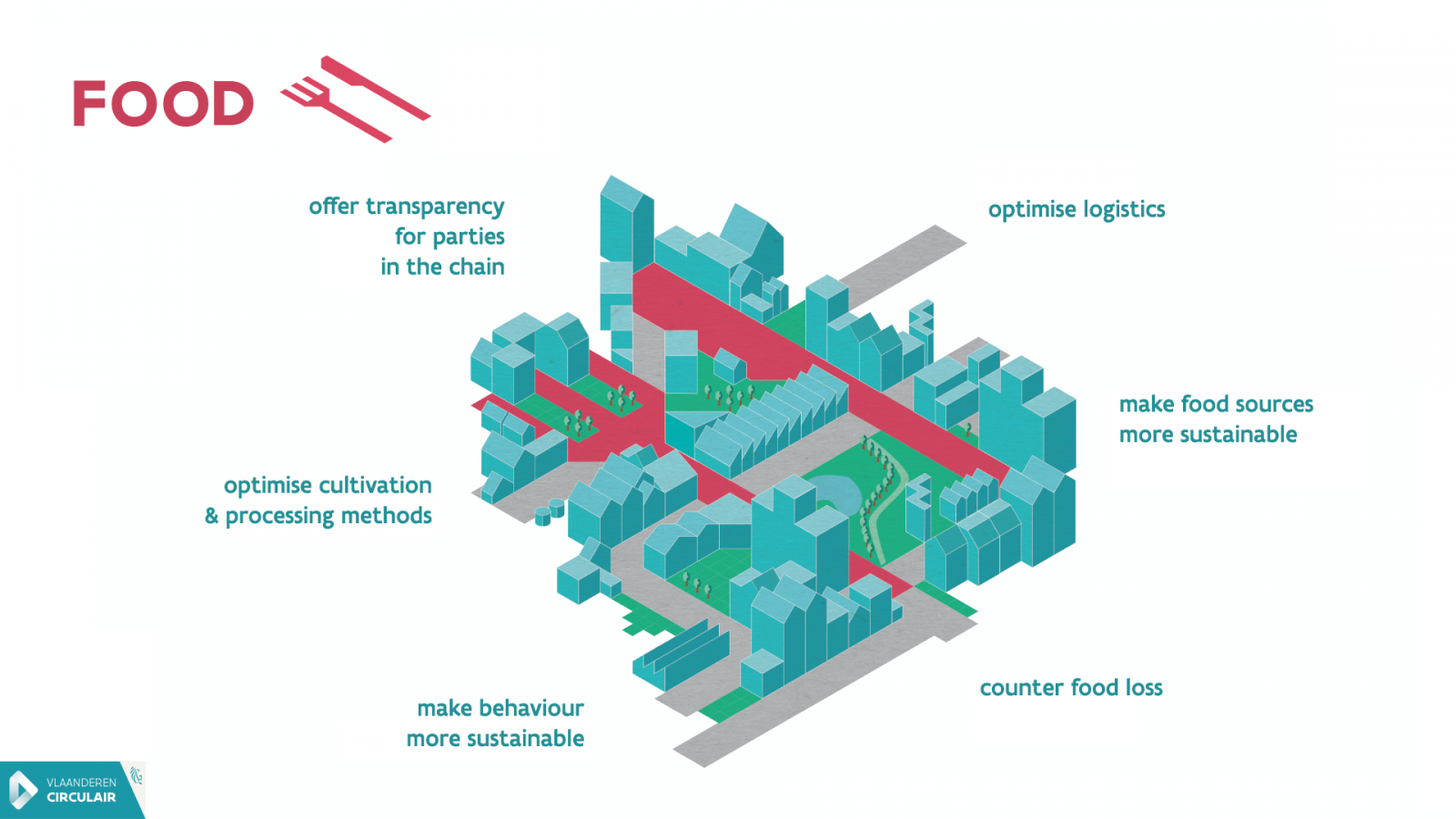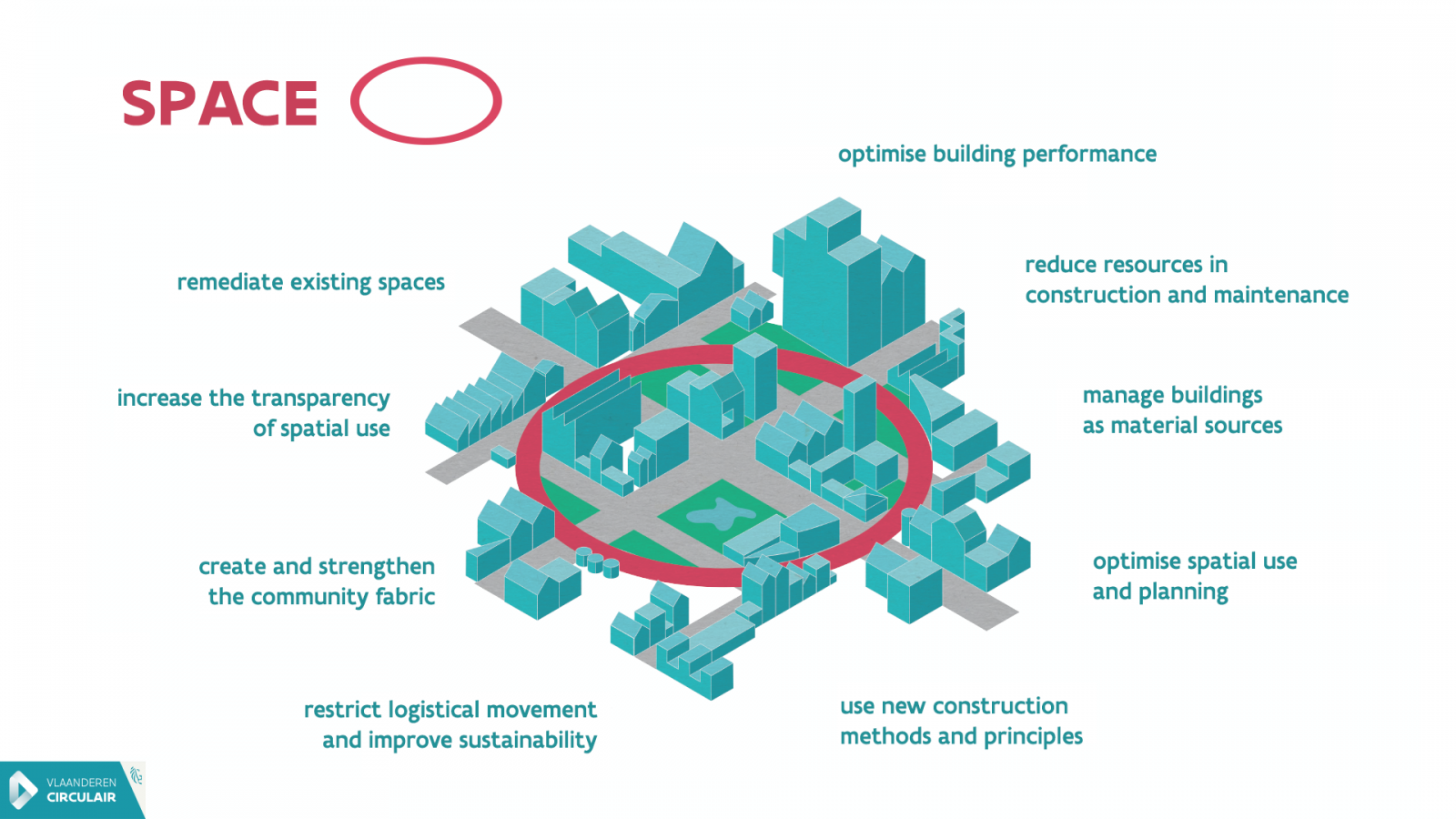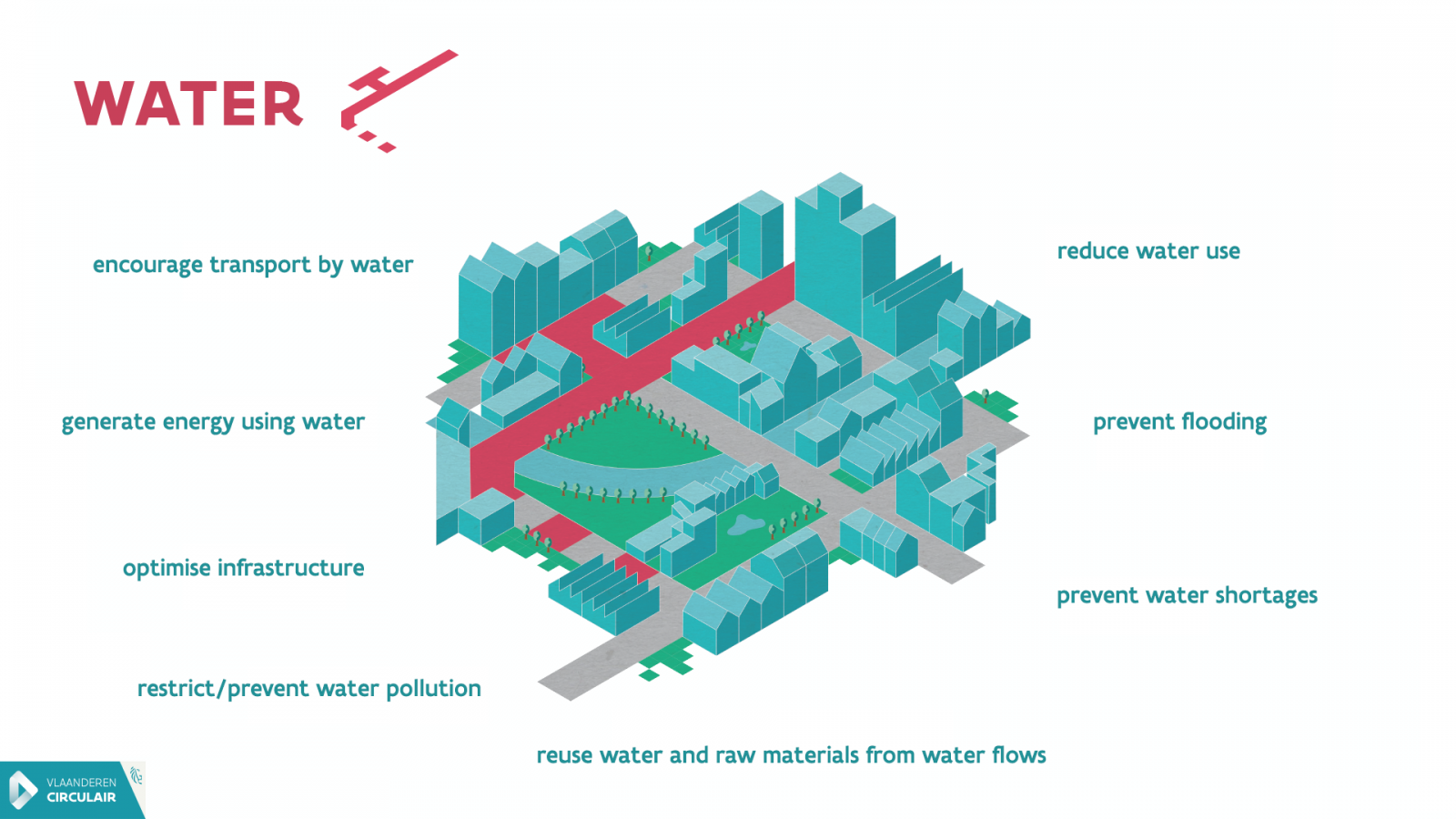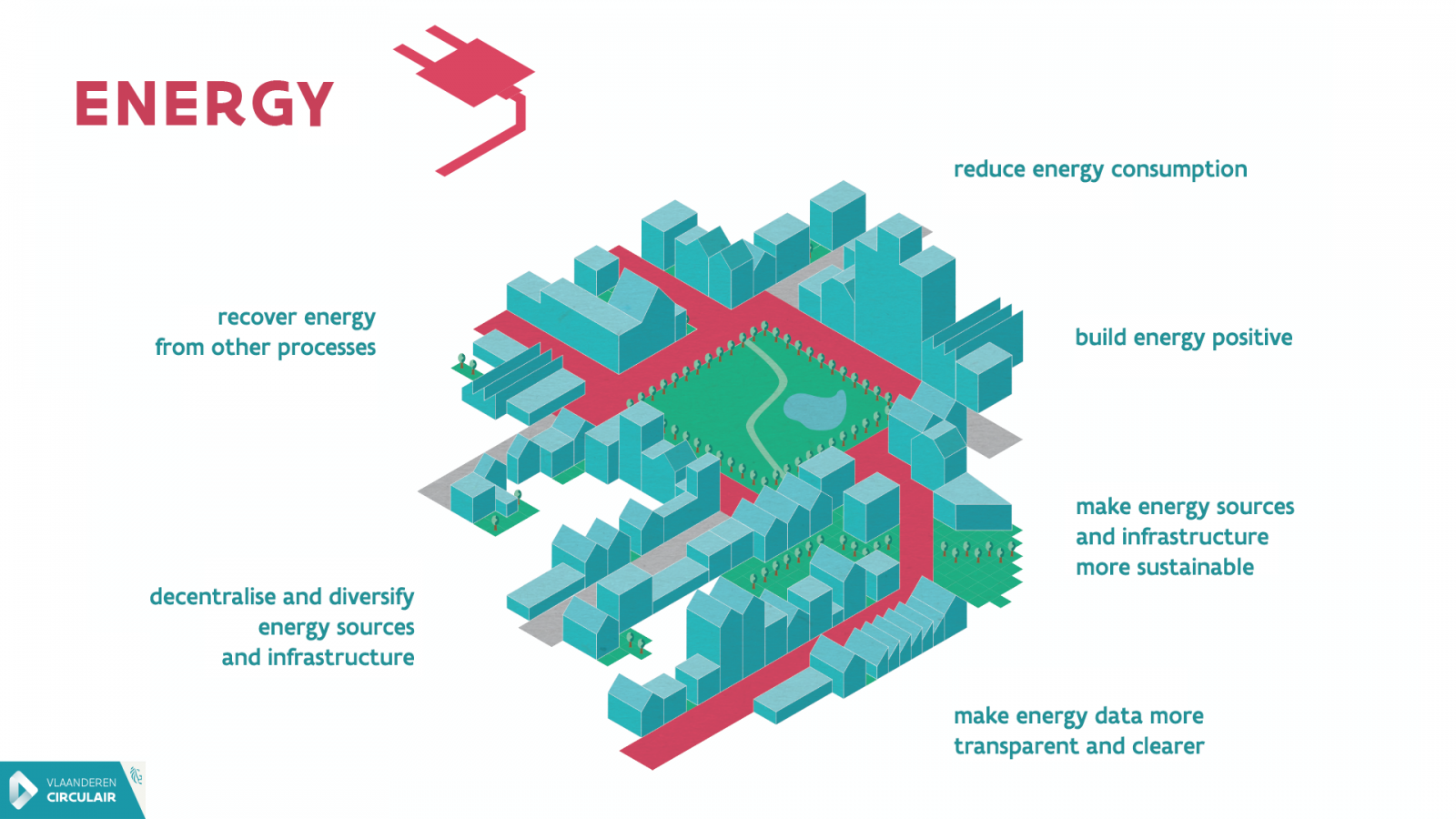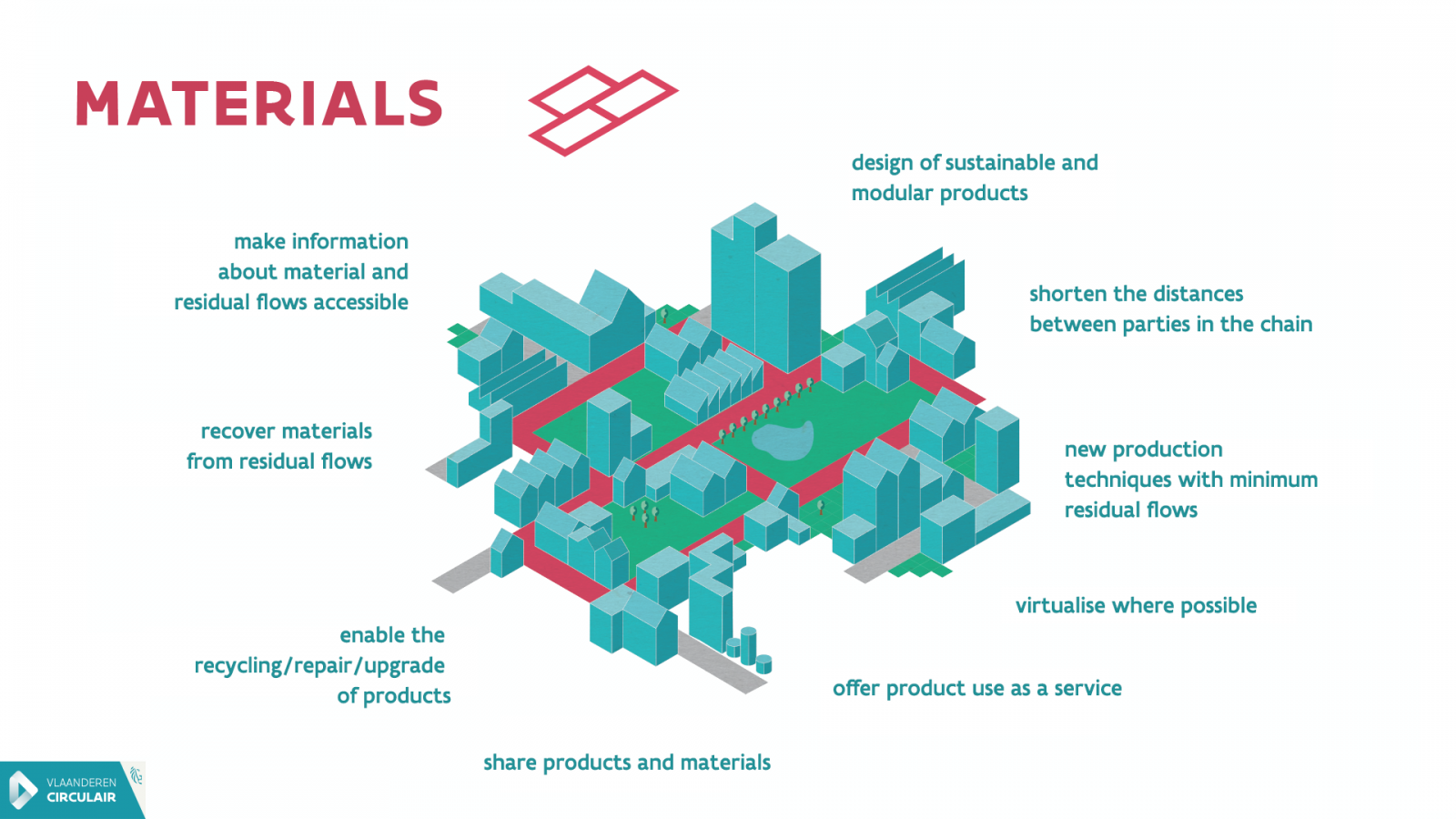Topics
We organise our actions in six thematic & strategic agendas:
Strategic Agendas:
Bio-economy
Circular Construction
Chemicals/Plastics
Manufacturing Industry
Food Chain
Water Cycles
Seven leverages provide additional support:
Leverage effects:
Lever Policy Instruments
Lever Circular Procurement
Lever Communication
Lever Innovation & Entrepreneurship
Lever Financing
Lever Jobs & Skills
Lever Research
What, why and how?
Why are we pursuing a circular economy?
Future visions 2050
How do we see our circular future?
About our management
Who steers what at Flanders Circular?
Circular & Smart Cities: Five things to remember
Thursday 22 February 2018
‘How can smart technology help a city in the circular economy?’ Pantopicon and imec presented the results of an exploratory study by order of Circular Flanders and we were able to take a look at the plans of Smart Flanders, AGORIA, and Circular South from the City of Antwerp. Five takeaways for now:
1. Providing some structure can’t do any harm
We are bombarded by terms about smart technology: IOT, blockchain, big data, smart grids, AI, VR, AR, robots, drones, etc. Mix that with the all-encompassing concept of the circular economy and things start to get a bit cloudy. To bring a little structure into things, we asked imec and Pantopicon to map and structure how smart technology can advance the circular economy in the city. In other words: what will circular smart cities look like? We also asked them to take a look at Belgian companies that are already at this crossroads. We will gradually be revealing the insights from the studies on our site, but in the meantime, this is the essence.
A DEFINITION
Smart technologies:
- they sense using sensors;
- connect different ‘things’;
- and generate data to analyse and draw conclusions.
This ensures that systems:
- which can (themselves) automatically adapt to the environment;
- can learn to improve performance.
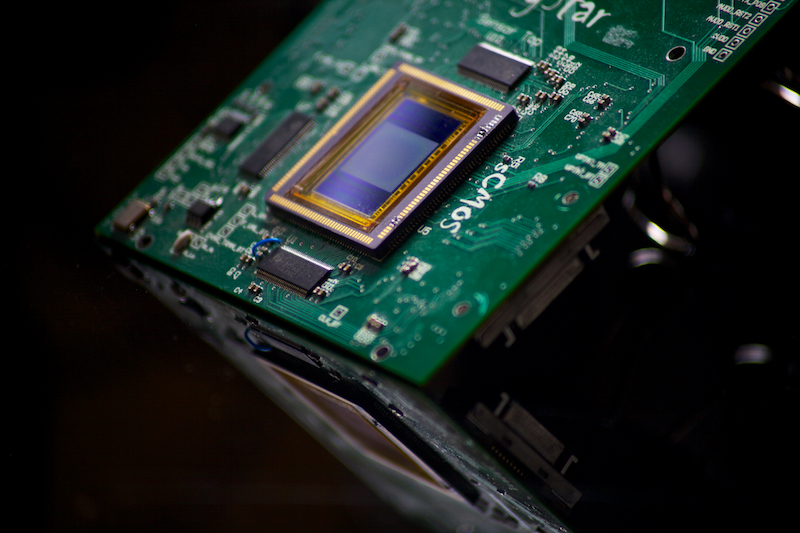
FIVE TRENDS
The authors distinguish between five major trends in smart technology:
- Measuring as a starting point to knowing is becoming increasingly important
Example: Each day, 180 million litres of drinking water are lost due to leaks in our water mains network. These losses come with a price tag of over 280 million euros a year. Using sensors to better monitor the pipework means we can cut this costly waste and its environmental impact.
- The wealth of (sensor) data must be analysed and made understandable
Example: smart plant nurseries collect a lot of data on their plants. The data are analysed and translated into an interface on a human scale: using augmented reality glasses, employees get a clear, live, and on-site overview of the plants so there is less loss and wastage during production.
- Autonomous technology is becoming increasingly commonplace
Example: cars can function increasingly more autonomously thanks to sensors, data, and algorithms. We then eliminate human error and can organise transport much more efficiently, potentially with fewer cars, less asphalt, and reduced waiting times.
- Cooperating is becoming easier
Example: thanks to digital platforms and tracing technology, companies can more effectively match and combine their transport flows. Containers that used to be shipped back to a sender empty are now filled with goods from another sender.
- Transparency and safety are becoming increasingly important
Example: with technologies such as blockchain, a product can be monitored from source to end user (and second, third life) and registered in a hitherto fraudproof way. It is good to see the whole picture and, for example, make ethical choices or more accurately value reused goods.
5 FLOWS
We had the opportunities of smart technology investigated for five types of cycles (flows). The authors defined a number of opportunities for each flow. In turn, the opportunities were each developed into actual and concrete applications for the city. The applications could be already existing ones or inspiration for the future. We will gradually be revealing all in the coming months.
2. SPACE > slimme technologie kan:
- reduce resources in construction and maintenance
- optimise spatial use and planning
- manage buildings as material sources
- optimise building performance
- use new construction methods and principles
- restrict logistical movement and improve sustainability
- create and strengthen the community fabric
- increase the transparency of spatial use
- help with existing space remediation
5. MATERIALS > smart technology can:
- help to design sustainable and modular products
- shorten the distances between parties in the chain
- enable new production techniques with minimum residual flows
- virtualise where possible
- help offer product use as a service
- help share products and materials
- enable the recycling/repair/upgrade of products
- enable material recovery from residual flows
- make information about material and residual flows accessible
Trendsetter: an opportunity in detail
Each opportunity was developed along potential avenues for the future, including existing Belgian cases where possible. We will be revealing these in the coming months. So make sure you keep an eye on our website.
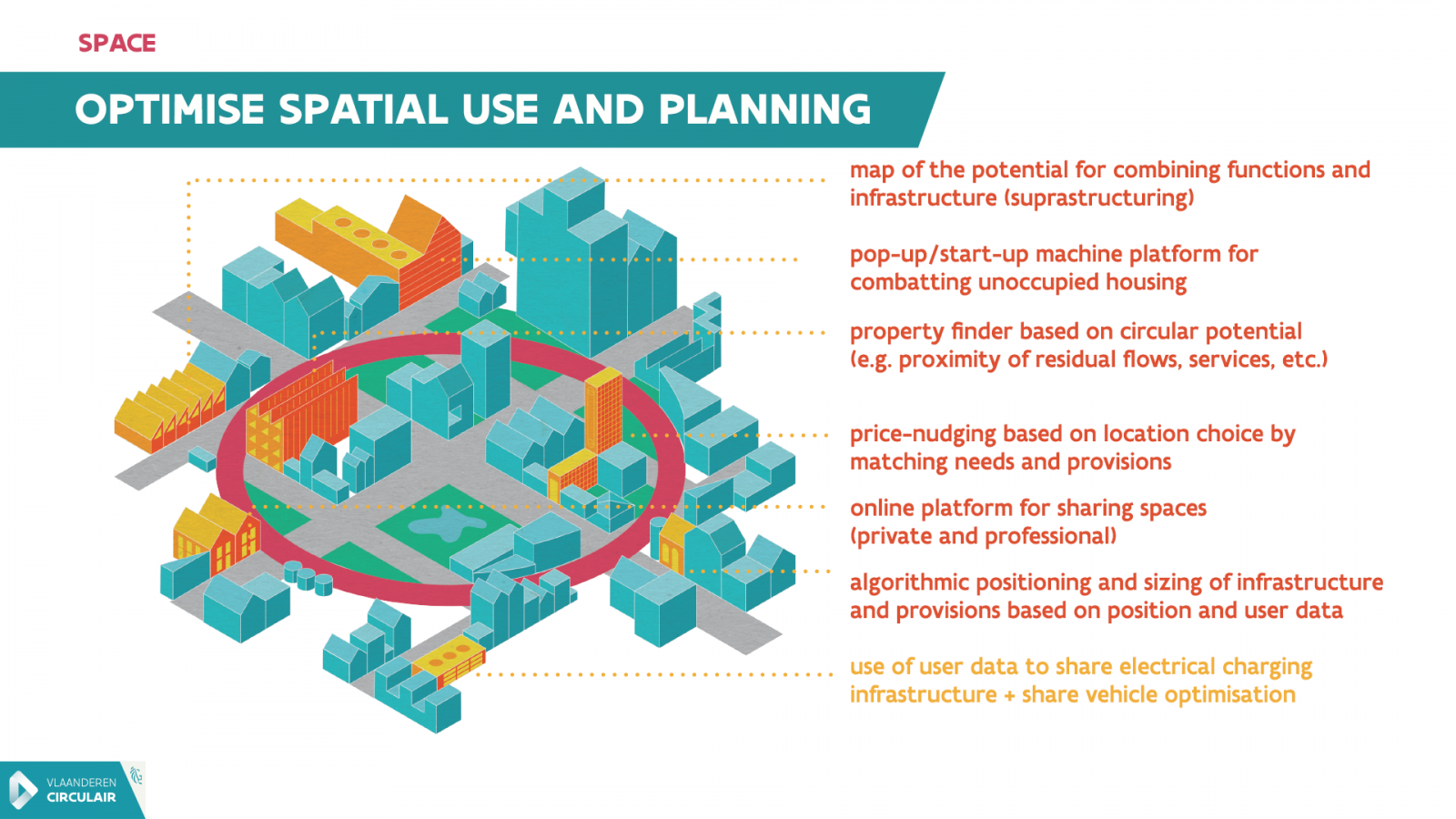
2. To measure is to know, but know what you want to measure
As mentioned, measuring as a starting point to knowing is increasingly important and feasible thanks to smart technology. But, as Helen Versluys from AGORIA insists: before you get started on something like this, you must know what you want to measure and why. With some sensors generating an endless flow of data, anyone can, in a manner of speaking, analyse and make the data understandable and usable, with the art being in the selection.
Helen was speaking from experience: the AGORIA technology federation has already been working with its rank and file on the integration of a circular economy in the sector for quite some time now. It’s all about trial and error. With the latest project, Circular Bytes, (with the support of Circular Flanders) they go in search of the added value that digital technology can offer to optimise processes, improve maintenance, use other business models, etc. The requirement for the right data selection is often the starting point here.
With some sensors generating an endless flow of data, anyone can, in a manner of speaking, analyse and make the data usable, with the art being in the selection.
3. Whoever sows data will harvest applications
Nils Walravens came and told us how people and local authorities can reap their rewards from open data. Nils works at Smart Flanders, a support programme from the Flemish Government for real-time open data at local authorities. His main proposition was that developing good and relevant applications that unlock data is specialist work. Building an app requires persistent development, maintenance work, marketing, and more. Also, only a fraction of apps developed are successful. That is why the authorities are wise to adopt an open data approach: make all data freely available to developers, and let the market tinker with applications that can really benefit people. In London, for example, the transport company makes all data freely available to the market. 13,000 developers have developed some 600 apps. 42% of Londoners use an app based on open data.
The role of governments can, according to Nils, be more far-reaching than just ‘passively’ making data open. The government must also actively mediate to unlock data from private owners. Smart Flanders, for example, has a pilot project in which it combines the efforts of 13 city centres to collate and unlock (mainly private) parking data. That requires custom work and negotiations with the individual parking companies, which each have their own specific interests, contracts, and software.
4. Smart technology is no longer the happy-few technology
The technological train continues on its way, but the tickets get cheaper and cheaper. Sensors, connectivity, dashboards, applications, chips, etc. are increasingly more powerful and less expensive and, as a result, are accessible to anyone, any authority, or any business with a plan. You can now buy packages with sensors or tracking devices for next to nothing to build your own Internet of Things in your home, district, or company.
The democratisation of technology makes imaginative and socially relevant applications feasible: dynamic pricing of drinking water and energy based on the available reserves, communicating waste collection centres, crowdsourced measuring stations for air quality, monitoring and tracing of equipment from the materials library, etc.
The technological train continues on its way, but the tickets get cheaper and cheaper.
5. Oh yes… and don’t forget the users
Is this not all too often a story of enthusiastic engineers who mainly come up with solutions and only then go in search of problems they can solve? In other words: how do we keep this type of technological development from passing people by, while they themselves are not actually involved (except as data cows) with their legitimate requirements and expectations?
The democratisation of technology is one part of the answer and involving people is another. Gabrielle Van Zoeren gave an excellent example of how they want to use smart technology in Antwerp to encourage citizens to live a more sustainable lifestyle. In the district under development, Nieuw-Zuid, the Circular South project involves a range of smart initiatives in homes, the environment, and public spaces to bring about a more sustainable and enjoyable district.
Residents can, for example, sign up to a system that automatically rewards them in a digital account if they act sustainably (e.g. only put the washing machine on when the sun shines, deposit less residual waste, shop locally, etc.). To get such a system working, you must first get the residents behind you and take their tempo and concerns into account. Or as Gabrielle put it: “If you don’t get the people on board, sustainability will remain a theory, never becoming a reality.”
“If you don’t get the people on board, sustainability will remain a theory, never becoming a reality.”
Gabrielle Van Zoeren
